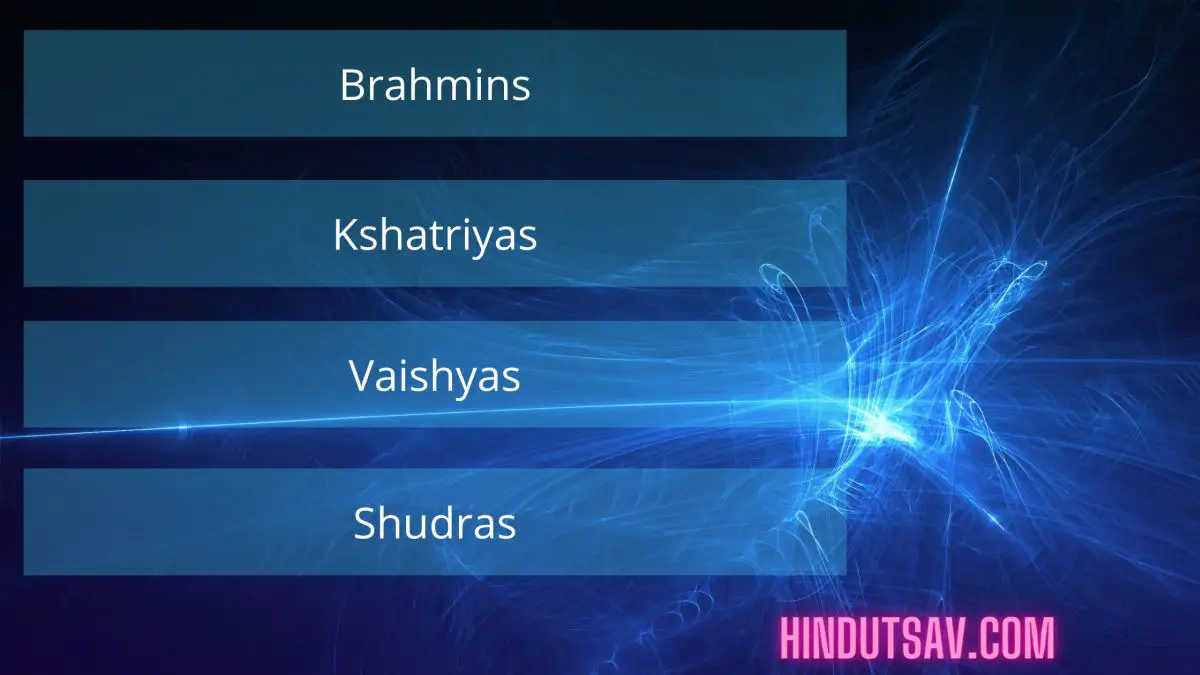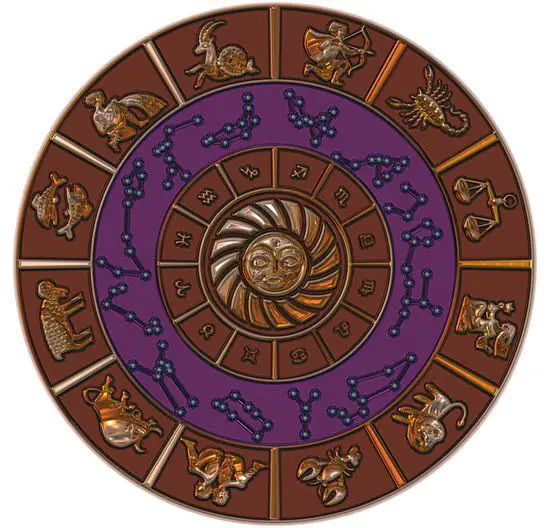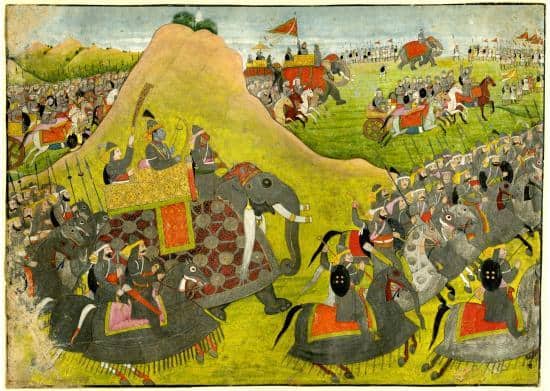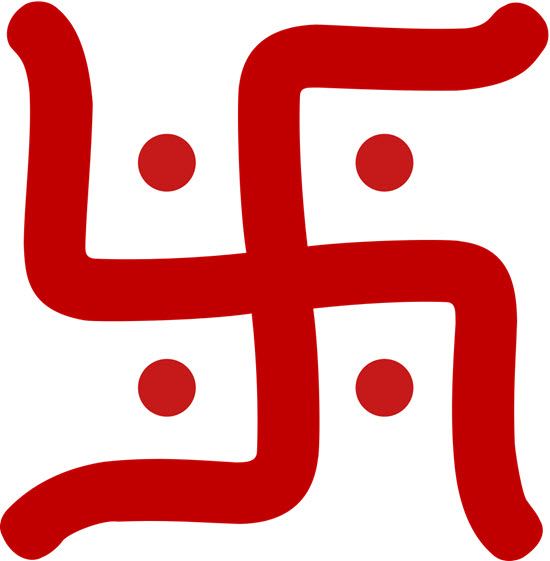This post shares with you the Four Varna System in Hinduism. In fact, Varna System was the system prevalent in ancient India in the Vedic Period (c. 1500 – 1000 BCE). It included the following four principal categories as follows:
- Brahmins (Priests & Gurus)
- Kshatriyas (Warriors, Kings, Administrators, etc.)
- Vaishyas (Traders & Agriculturists)
- Shudras (Laborers, Workers, and Artisans)
This Varna System in Hinduism required each individual to follow his duties. Hence, it is called “Svadharma.”
What is Varna?
Varna is a Sanskrit term that means the classification of people based on their qualities.
The root word is “Vr,” which means “to classify.”

Varna classifies people into four types, namely:
- Brahman, Kshatriya, Vaishya, and Shudra
The Varna System started in the Rig Vedic period.
It was the caste system that was prevalent in ancient times during the Vedic period.
According to the Four Varna System in Hinduism prevalent during the Vedic period:
- The Brahmans were considered supreme. It included priests and preachers.
- Kshatriyas are Kings and Warriors
- Vaishyas are Traders and Agriculturists
- Shudras are laborers who provide service to other people
Contrary to popular beliefs, one’s Gunas (qualities) and not one’s birth determine one’s Varna.
Here, it should be understood that “Gunas” are classified into three types, namely:
- Tamas
- Rajas
- Sattva
In Tamas Guna, the state of darkness is prevalent. It is the state of inactivity. Rajas is the state of action & energy. Sattva is the state of harmony and balance.
Each person possesses all these “Gunas”; however, the dominant Guna (quality) determines one’s character and thus one’s Varna.
Basically, the Varna System in Hinduism determines the occupation of each individual. The Varna System came into existence so as to allow each individual to perform their best in their vocation. Thus, the Varna System established an orderly and harmonious society in ancient India.
The earliest mentions of the Varna System are found in the Purusha Suktam verse of the Rig Veda.
Here, we illustrate the Slokam that describes the Varna system in ancient India:
“ब्राह्मणोऽस्य मुखामासीद्वाहू राजन्य: कृत:।
ऊरू तदस्य यद्वैश्यः पद्भ्यां शूद्रो अजायत”
(Purusha Suktam 13/Rig Veda 10.7.90.13)
The Brahmins possess spiritual wisdom and splendor; the Kshatriyas have administrative and military prowess. The Vaishyas are in commerce and business enterprise. The Sudras are the productive and sustaining force that provides service to other people.
Here, the four Varnas have been described as four essential parts of God. It should be noted that no special importance is provided to any specific part. So, all the Four Varnas are equally important.
They form the basis for the normal function of society. There is no kind of superiority or inferiority involved. Each Varna (Brahmans, Kshatriyas, Vaishyas, and Sudras) plays its role in society’s normal functioning.
The Varnas are categorized based on:
- Jati (By birth): For example, a person born in a Brahmin family is called a Jati Brahmin. This classification established the caste system that is still prevalent even today.
- Karma: It is based on the profession of the person. For example, a person who dedicates his life to the study and propagation of the scriptures and helps society to lead a pious life is called a Karma Brahmin. Likewise, a person who protects society is called a Karma Kshatriya. One who is involved in commerce or business is called a Karma Vaishya. Lastly, a person who serves the other three professions is called a Karma Shudra.
- Guna (Character): In this classification, a person is classified based on his character. So, a person who has a religious and spiritual nature is called a Guna Brahmin (Brahmin by character). One who is courageous and serves society at all times is called a Guna Kshatriya. Likewise, an individual who possesses business sense is called a Guna Vaishya. Lastly, a service-oriented person is called Guna Shudra (Shudra by character).
This has been validated in the Bhagavad Gita (4.13):
चातुर्वर्ण्यं मया सृष्टं गुणकर्मविभागश: |
तस्य कर्तारमपि मां विद्ध्यकर्तारमव्ययम् (4.13)
Meaning: The four categories of occupations were created by me according to people’s qualities and activities. Although I (God) am the creator of this system, know me to be the non-doer and eternal.
Name of Four Varnas
Below we have enumerated the Four Varnas and their specific (primary) duties:
- Brahmins (Teachers, Priests, and Intellectuals)
The Brahmins provide education and spiritual knowledge. They establish the vision and values of the society. This class dedicates itself to spiritual tasks.
Main duties:
- To study and teach the Vedas
- To perform the religious ceremonies
- To accept alms
- To offer guidance to the Kshatriyas
- To provide general advice free of charge
- To know God or Brahma
- To never accept paid employment
- To develop qualities like honesty, integrity, purity, cleanliness, knowledge, and wisdom
- Kshatriyas (Warriors, Administrators, and Police)
The Kshatriyas are the protectors of society. Although they are provided several privileges, they display a considerable strength of body and character.
Primary duties & qualities:
- To protect the citizens
- To make sure that the citizens perform their prescribed duties
- To fight the battle and never flee from the battlefield
- To follow their royal word
- To accept every challenge
- They possess noble qualities like generosity, power, and chivalry
- They levy taxes
- They never accept charity under any circumstances
- They take counsel from the Brahmans
- They deal uncompromisingly with crime and lawlessness
- They take responsibility for any shortcomings in their kingdom
- They conquer their minds and senses
- To beget an heir
- Vaishyas (Merchants, Businessmen, and Framers)
The Vaishyas are the productive class that creates wealth and prosperity. They trade ethically and give taxes to the ruling class (Kshatriyas).
- Shudras (Workers and Artisans)
Shudras are the class that accepts another’s employment. They render service to others. They take pride in their work and remain loyal to their employers.
Well, now we have reached the end of this post. We hope that you would have by now understood the Four Varna System in Hinduism. In the Vedic period, there was no discrimination between people based on what Varna you belong to.
The Four Varna played their roles in shaping up society. There was no kind of superiority or inferiority involved.
Thanks for visiting and reading this post on Varna System. You can find many related topics on Hinduism in HindUtsav.




